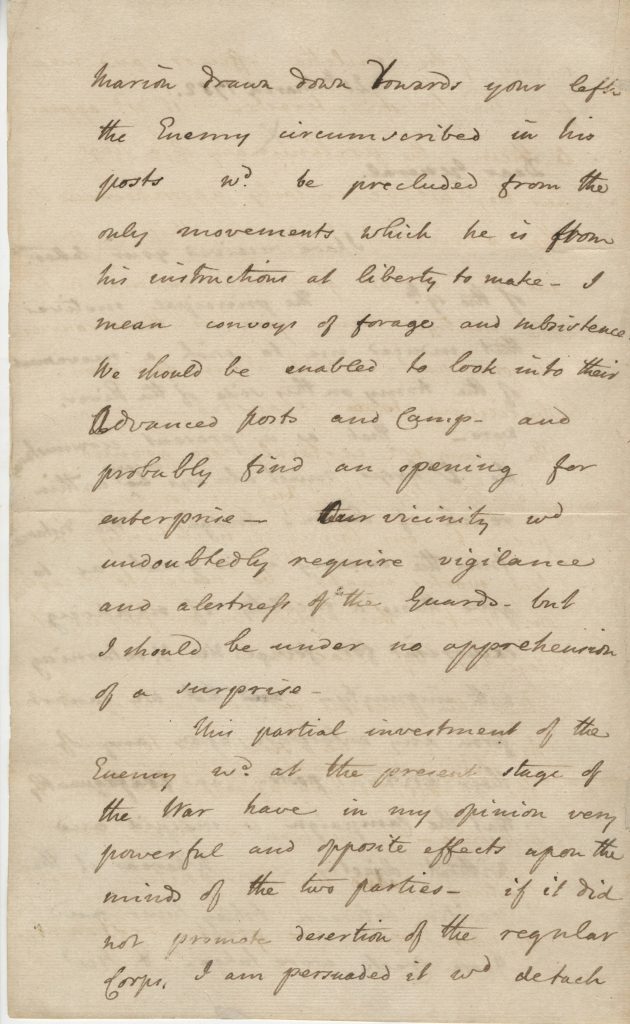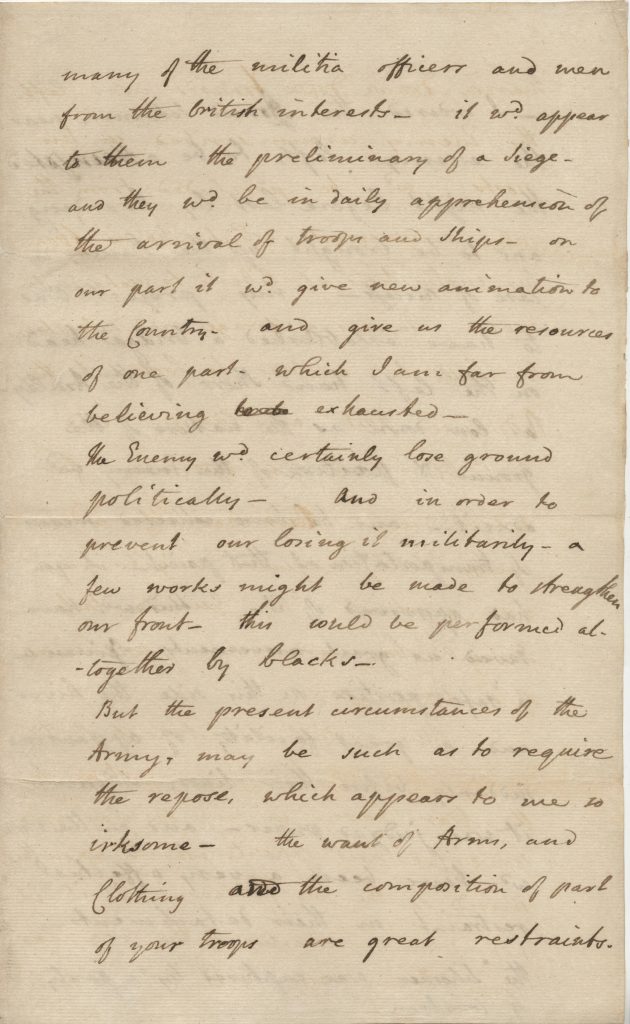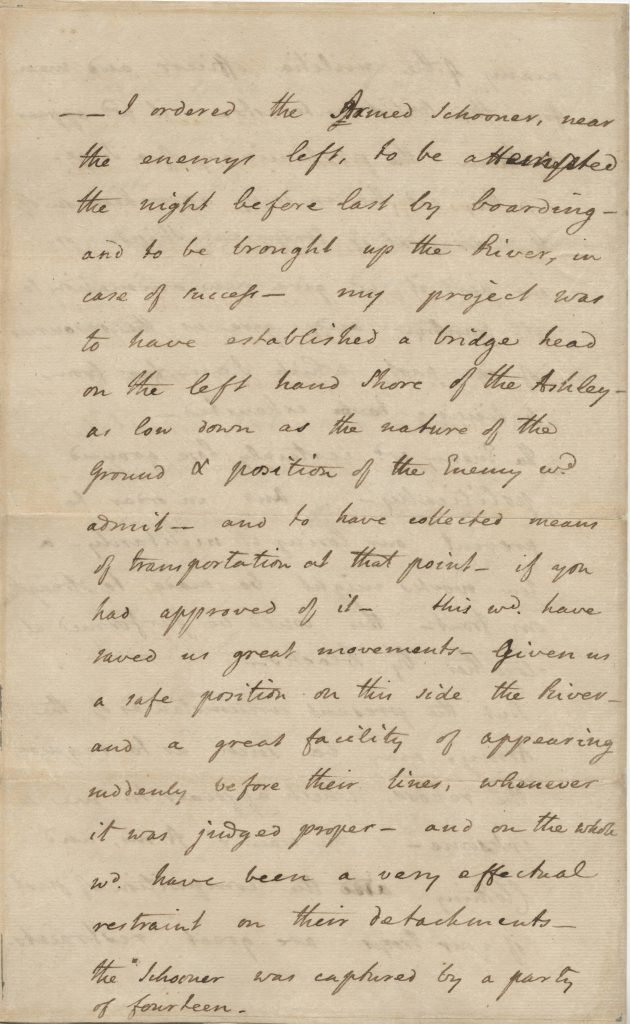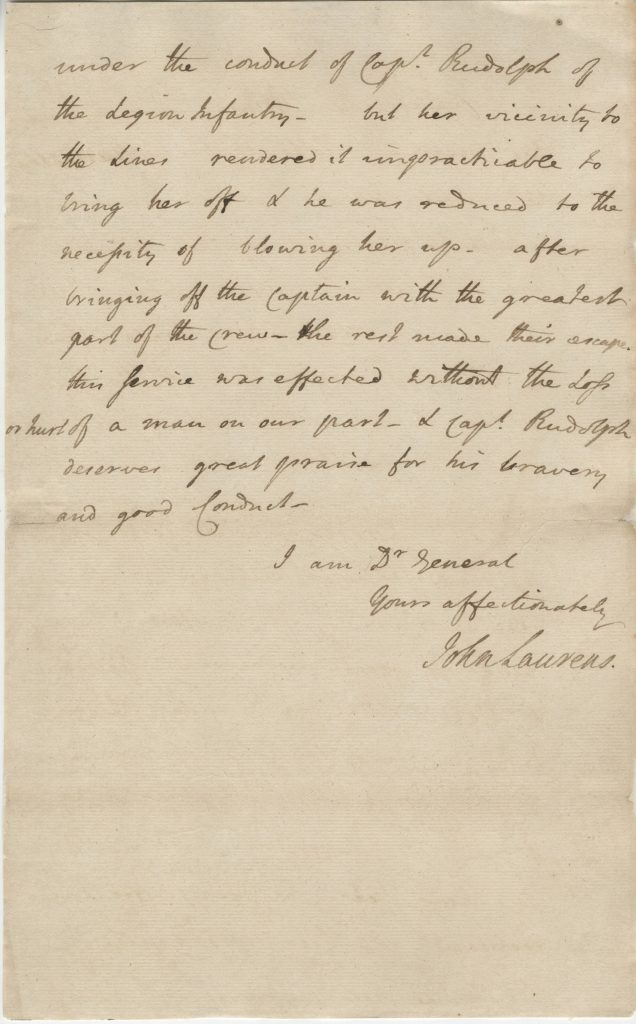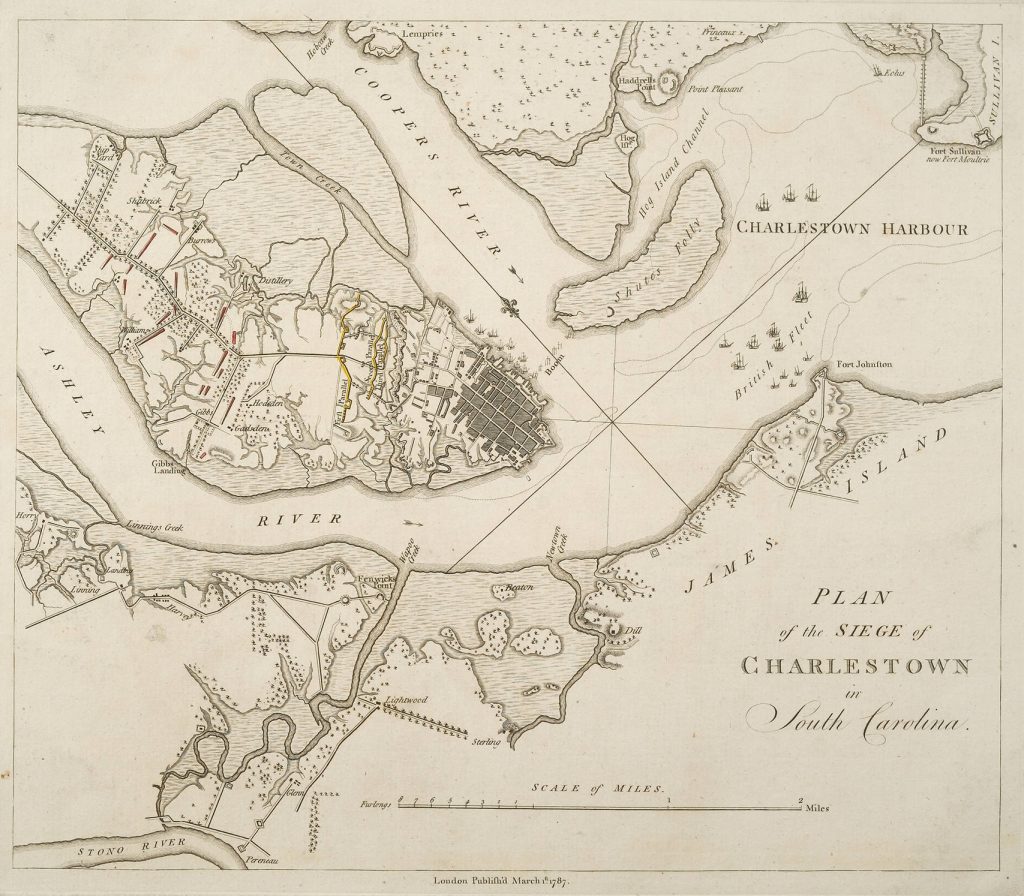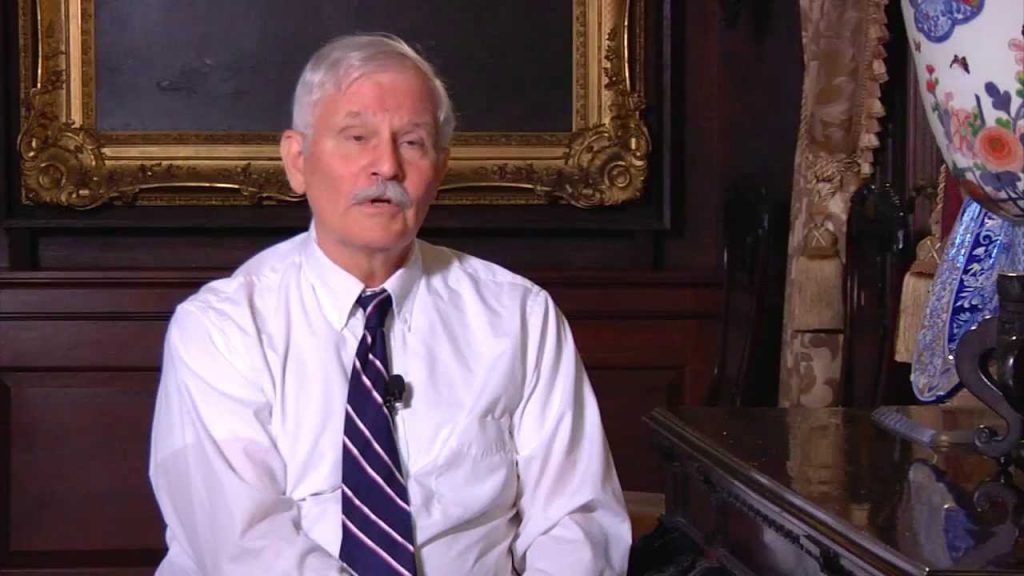
Click to play video segment.
Slavery and America’s Revolutionary Leaders, Part 2 of 3: Slavery and Washington, Marshall, Hamilton and Laurens
James H. Hershman, Jr.
July 3, 2013The American Revolution Institute of the Society of the Cincinnati
Slavery is the great American contradiction. The independence of the United States held the promise of liberty and equal rights for all, yet the country’s founding documents permitted slavery to endure. Indeed, many of the men who wrote and signed these documents owned enslaved men and women. Professor Hershman examines eight leading revolutionaries—George Washington, John Marshall, Alexander Hamilton, John Laurens, Thomas Jefferson, Benjamin Franklin, John Adams and James Madison—and their relationship with slavery, including what experiences influenced their views and if their views changed over their lifetimes.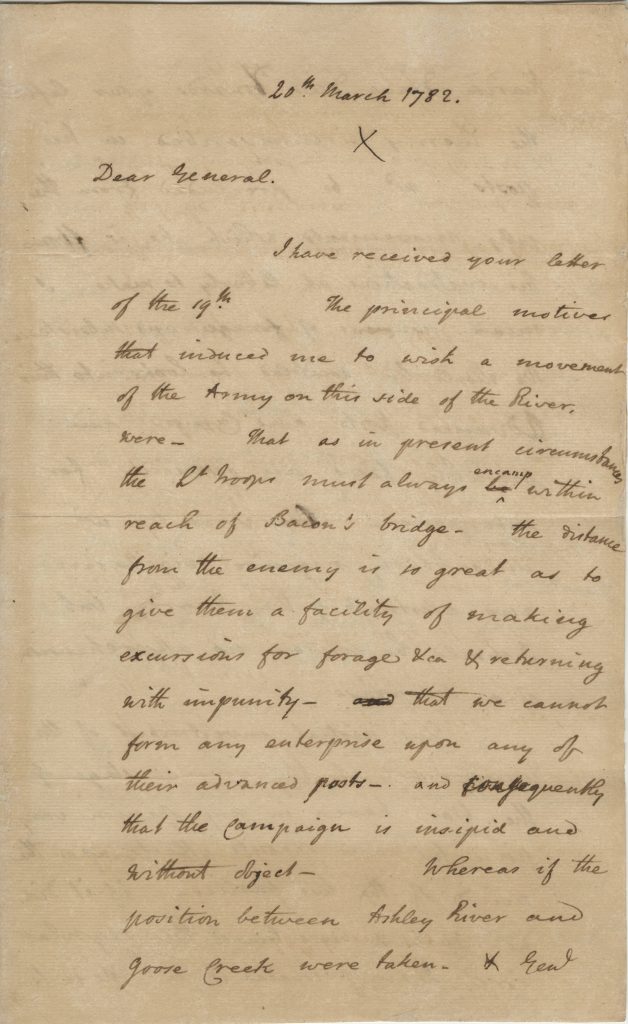
Click for a larger view.
John Laurens to Nathanael Greene
March 20, 1782The American Revolution Institute of the Society of the Cincinnati
Lt. Col. John Laurens joined the army as an aide-de-camp to General Washington in 1777. He was an opponent of slavery & an advocate of allowing slaves to earn their freedom by fighting as soldiers in the revolutionary war. In this letter to General Greene, Laurens recommends advancing the American positions to more closely engage with the enemy, and suggests strengthening their front by building new works that could be "performed altogether by blacks." He laments the lack of arms and clothing among the American troops, and he reports on the successful capture of a British schooner by a Captain Rudolph.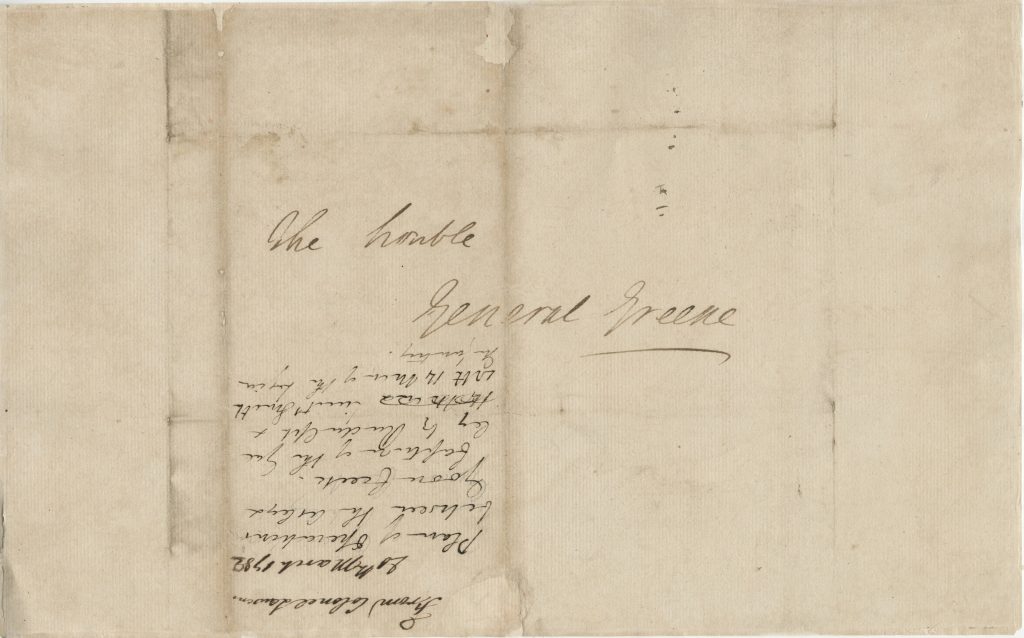
Click for a larger view.
John Laurens to Nathanael Greene
March 20, 1782The American Revolution Institute of the Society of the Cincinnati
Docketed on verso: "From Colonel Laurens 20th March 1782. Plan of operation between the Ashley & Goose Creek. Capture of the Galley by Rudolph and Lt. Smith with 14 men of the legion infantry."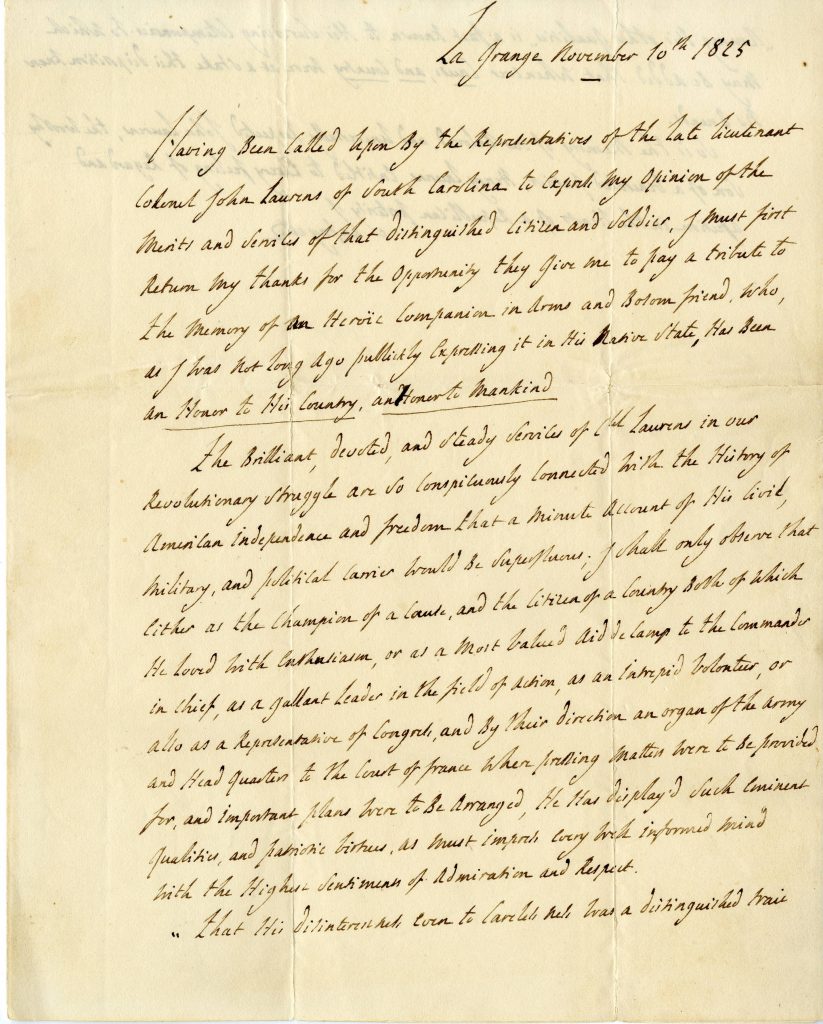
Click for a larger view.
Memoir of Lt. Col. John Laurens
Marie Joseph Paul Yves Roch Gilbert Du Motier, marquis de Lafayette
November 10, 1825The American Revolution of the Society of the Cincinnati
Soon after his return to France from his grand tour of the United States in 1824-1825, Lafayette wrote this memoir of his former comrade-in-arms Lt. Col. John Laurens of South Carolina, who was killed in action at Combahee River in 1782: "The brilliant, devoted, and steady services of Col. Laurens in our revolutionary struggle are so conspicuously connected with the history of American independence and freedom that a minute account of his civil, military, and political career would be superfluous. I shall only observe that either as a champion of a cause, and the citizen of a country both of which he loved with enthusiasm, or as the most valued aid de camp to the commander in chief, as a gallant leader in the field of action, as an intrepid volunteer, or also as a Representative of Congress ... he has display'd such eminent qualities, and patriotic virtues, as must impress every well informed mind with the highest sentiments of admiration and respect. That his disinterestness [sic] even to carelessness was a distinguished trait ..."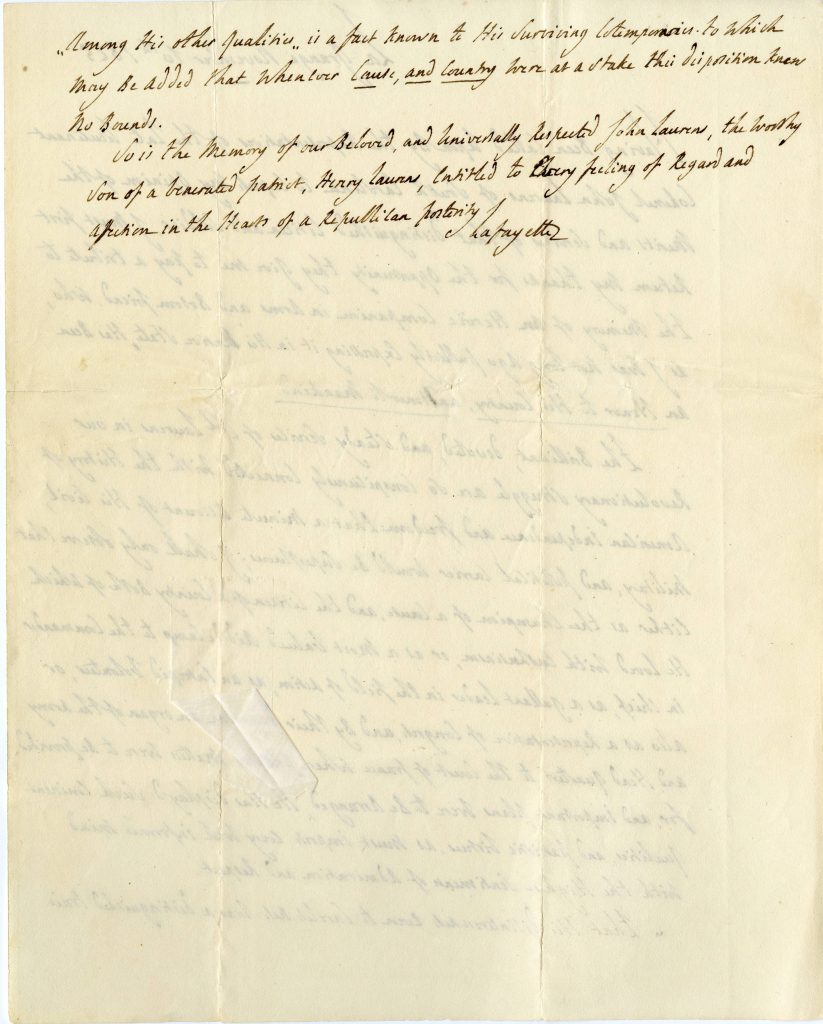
Click for a larger view.
Memoir of Lt. Col. John Laurens
Marie Joseph Paul Yves Roch Gilbert Du Motier, marquis de Lafayette
November 10, 1825The American Revolution of the Society of the Cincinnati
"... among his other qualities is a a fact well known to his surviving contemporaries to which may be added that whenever cause and country were at stake this disposition knew no bounds ..."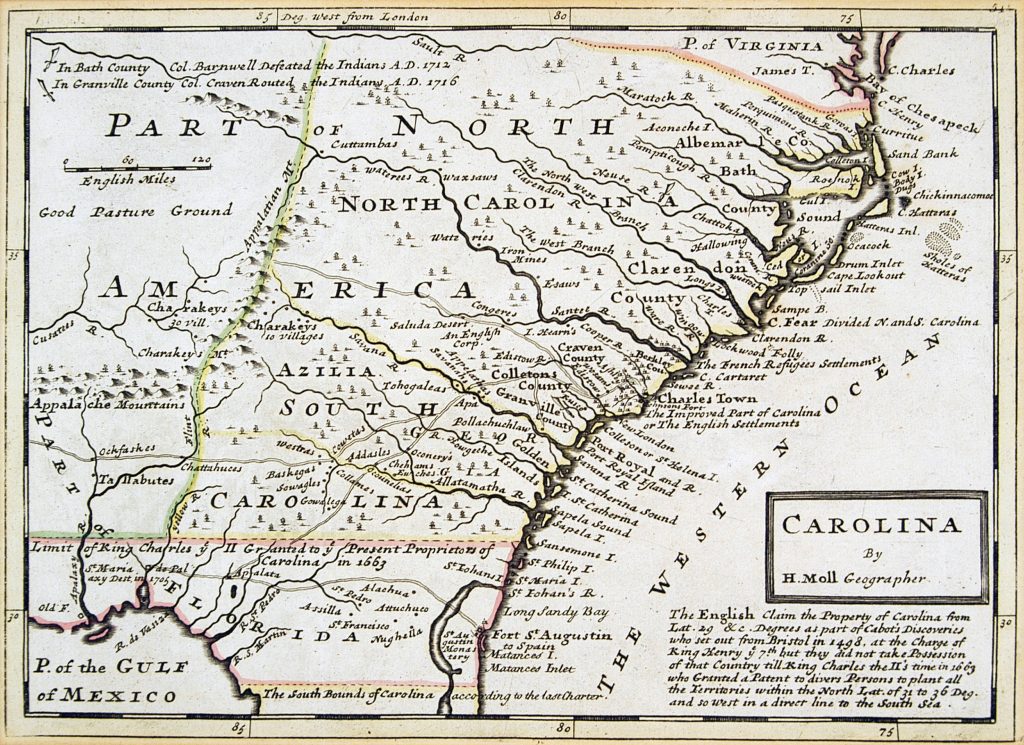
Click for a larger view.
Carolina
H. Moll, geographer
[London], 1736The American Revolution Institute of the Society of the Cincinnati
This map, which extends from the south bounds of Carolina to C. Charles in Virginia, shows the location of Indian tribes in the Carolinas. It gives the chief roads or trading routes westward from Charleston, and many islands along the coast are identified by name for the first time on a printed map. In later states of map, "Azilia" was changed to "Georgia."